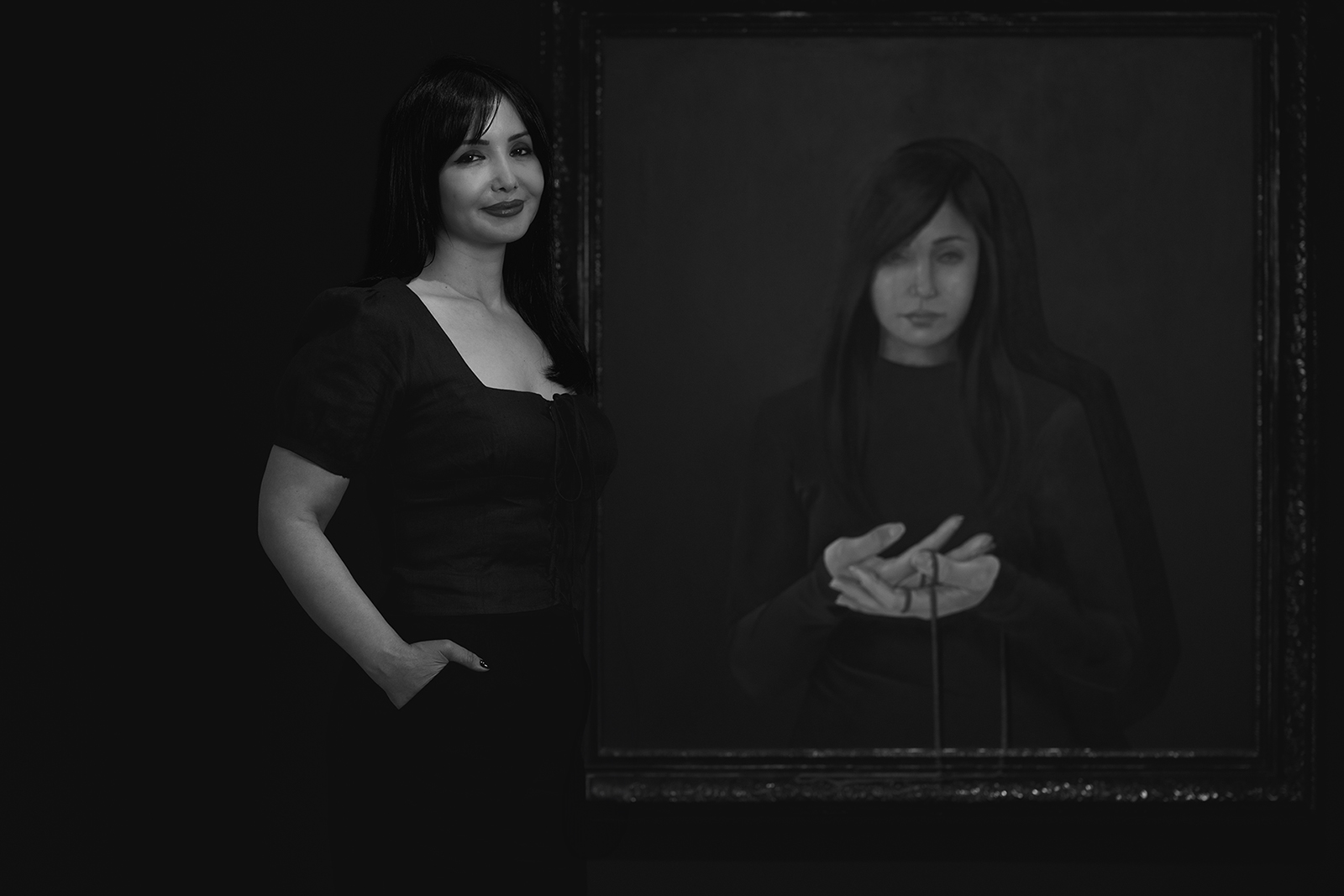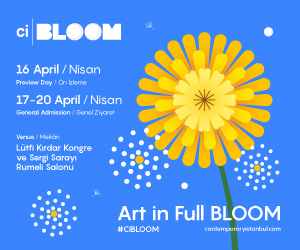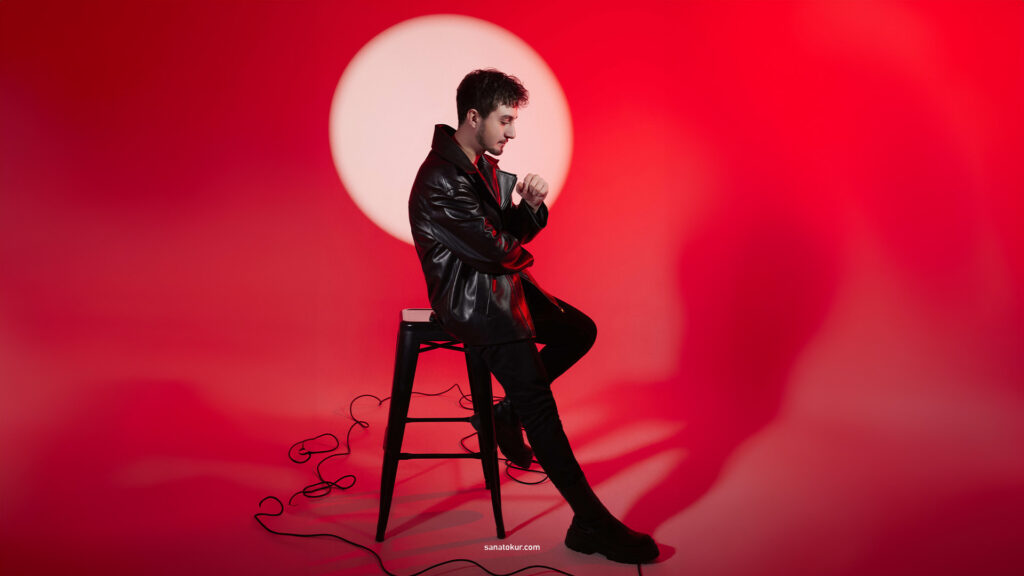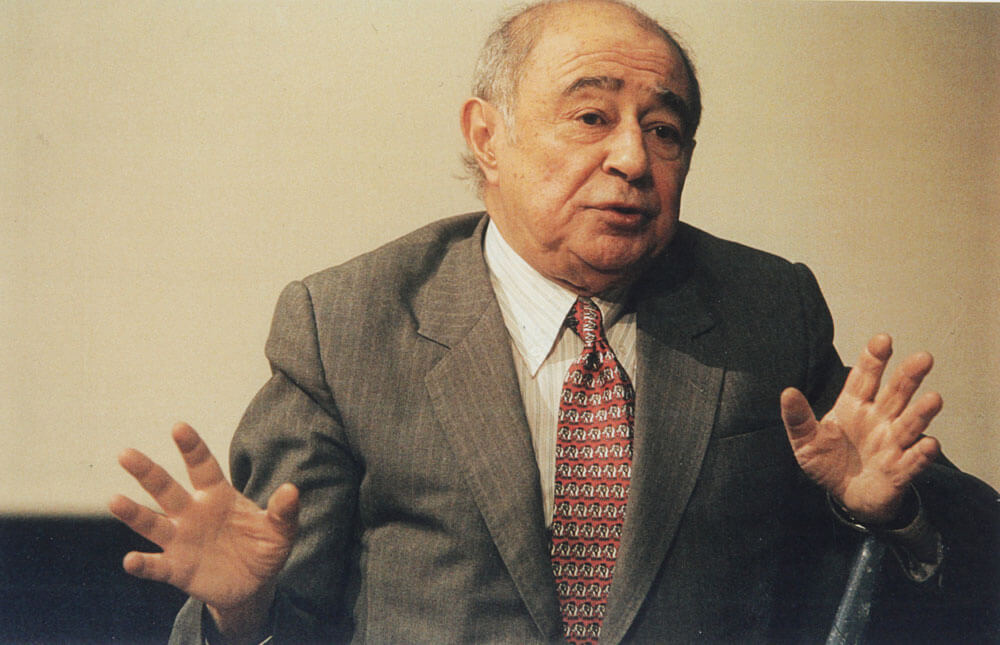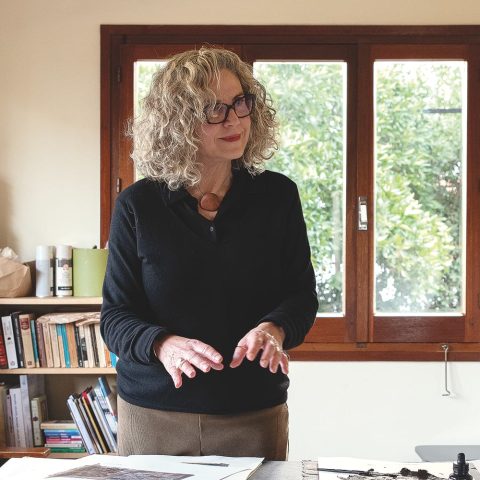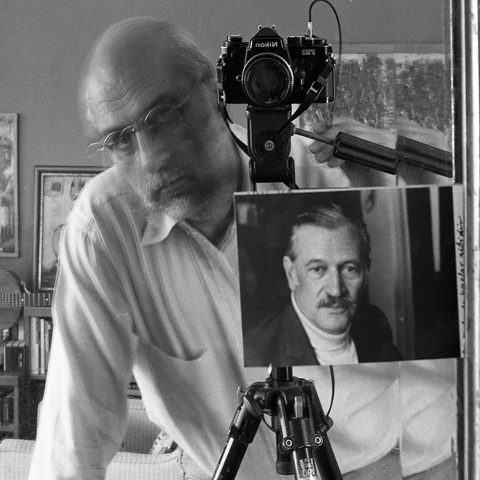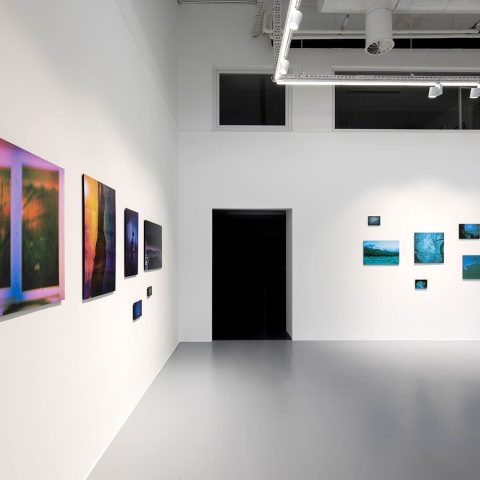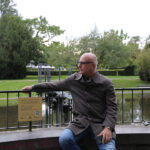Interview with Ülkü Yılmaz on “Unnamed”
For Sanat Okur, we had an interview with Ulku Yilmaz, embodying the feelings of the past to the present in every shade of black and showing her emotions, soul and words to the viewer in the world she creates with symbolist elements, about the details of her art and latest exhibition “Unnamed”, coordinated by Hakan Kurklu, taking place at Decollage Art Space.
I believe that In order to be able to enter into the world of an artist and perceive her/ his works, we should know about the artist well. Ülkü, Could you please tell us about your interest in art, how you started painting, and the process of your art until today to get to know you better?
In a period of time where computers and even television were not widely in our lives, we needed the books both to learn from them and to have fun through them, I started drawing the fairy tale characters in my childhood books. These fairy tales replaced by mythological stories afterwards and the act of staring at masterpieces for long hours in the museums by copying them in my sketchbook that I take with me everywhere I go…
The way I have always seen, perceived and understood the world has been through my heart that I believe it has been living in an ancient time so that I ve never felt myself in today’s world, the only places I feel at home were only the museums I have been to … There has been many things I learned from the schools throughout my life for sure but what museums have taught me is much more than just from a book, a curriculum or the perspective of a teacher so that I have built a life that I could rest in the museums when I was tired and could work in many of them throughout my life sometimes by talking about art to the visitors, sometimes by restoring masterpieces that had wounds… And the most important thing is that I could create my art that has been always in my life during all this time. Actually, I do not really know how else my ancient soul would survive in this time… This is not just a romantic expression… Believe me I can’t even imagine a lifestyle in another way… The jobs that I made money, the way I spent my free times, holidays were always in the places where art existed. However, the journey I express myself with all my sincerity on the canvas during this time has been the most real me. The world you have been seeing through my work has not been created overnight for sure. We live this life with its many experiences in a good or bad way … Probably the most difficult feeling is to be stuck in a world where we don’t feel that we belong to. I ve found the sentiment of belonging in my own works physically, emotionally, psychologically and spiritually like a religion to which I surrender myself. The story I talk about in my art is my own fairy tale in the abyss. My paintings and drawings have evolved over time while my feelings in this tale have remained the same for 15 years. I can not really remember exactly where and when my journey of self-expression started as an artist… As if it has been always there since I existed in one of the very old times …
In your paintings, there are repetitive images that symbolize something maybe you want to show us or maybe you want to insistently tell us. Like a heart, like a skull that are the Images widely used in the art history. What context do the symbols you use mean for you? Do them establish a relationship with narratives in the art history?
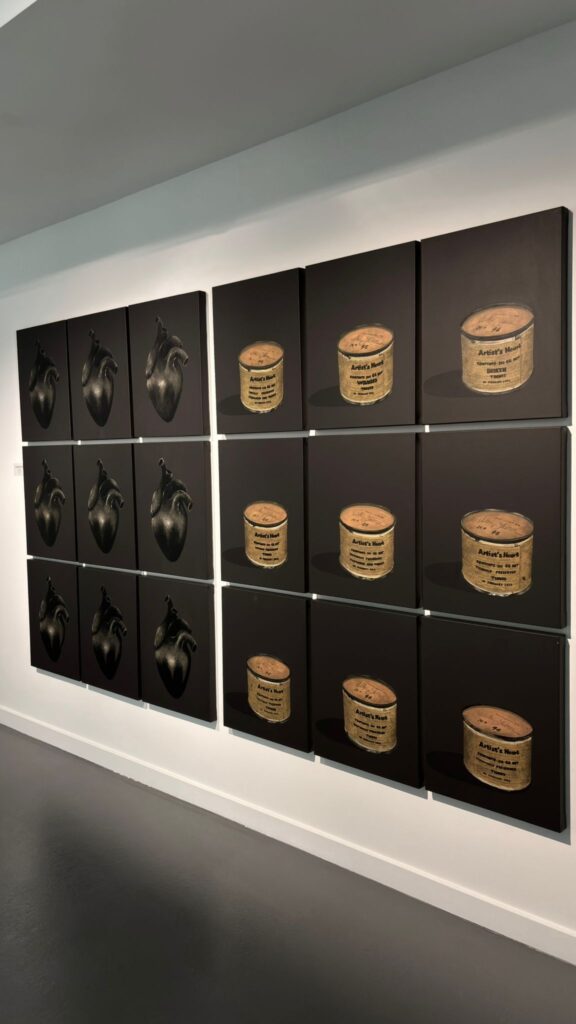
The works of art that inspire and motivate me are from the old times that continue their existence in the museums. Whenever I encounter one of them, sometimes I lose my consciousness, sometimes I am terrified feeling inadequate in front of them.. I can’t name any of these feelings “beautiful” . But I can say that such intense emotional changes are the moments that make me create my art and enable me to transform what I cannot say into my own language on the canvas, in ways that I rediscover with each new piece… Most of time, not the techniques of these paintings, the emotional impact of them make me produce my art… I have not encountered any work in today’s art that excites me to this extent till now.
In the art history, especially works depicted mythological stories and some religious scenes have been giving me inspiration to create my works. For example, currently in my ongoing solo exhibition called “Unnamed” at Decollage Art Space, there is a painting named “self-icon’ refers to the icon depictions in the Mary portraits from especially renaissance. The purity and grace on the portraits of Mary paintings can be felt in my “Self- Icon” while holding the feeling of a heart preserving in an old conserve can. In this painting, there is a neutral perception in the use of color that can be felt throughout the work, giving the impression of an antique painting that as if its varnish has been oxidized which I made it intentionally. This approach places the aged can that protects the artist’s broken heart, the hands holding it, and the portrait, which I want the viewer to focus on, at the focal point of the viewer. One of the things I like about this work is that while it has a contemporary interpretation, its feeling belongs to the art of the renaissance or baroque. In “Unnamed”, there is also another painting which has a figure upside down, with a straight depiction of a skull looking at the viewer. I created this work with the inspiration from the Spanish artist, Francisco de Zurbarán’s “Saint Francis of Assisi in His Tomb” painting. These two works of mine I just mentioned have almost parallel feelings with the works I was inspired by.
But contrary to what many people think, the symbols of a heart and skull , I often use in my paintings, are not the images referring to vanitas or a gothic approach. Anyone who sees my work in person can understand that I feel an emotional and psychological connection with these symbols. They are the most powerful symbols that I can express my emotions, experiences and memories in a more meaningful and most importantly in an effective way. They are truly so powerful so that they push the boundaries of my creativity to the deepest depths of my emotions in an incredible way to make me discover new ways of interpreting the subject, and this feeling makes me extremely excited whenever I start a new painting. Currently, and actually for a long time, I use heart and skull as the symbols of my emotions in my works, but in the future, maybe I will feel another symbol that will help me express myself with a much powerful depiction, so everything may change…
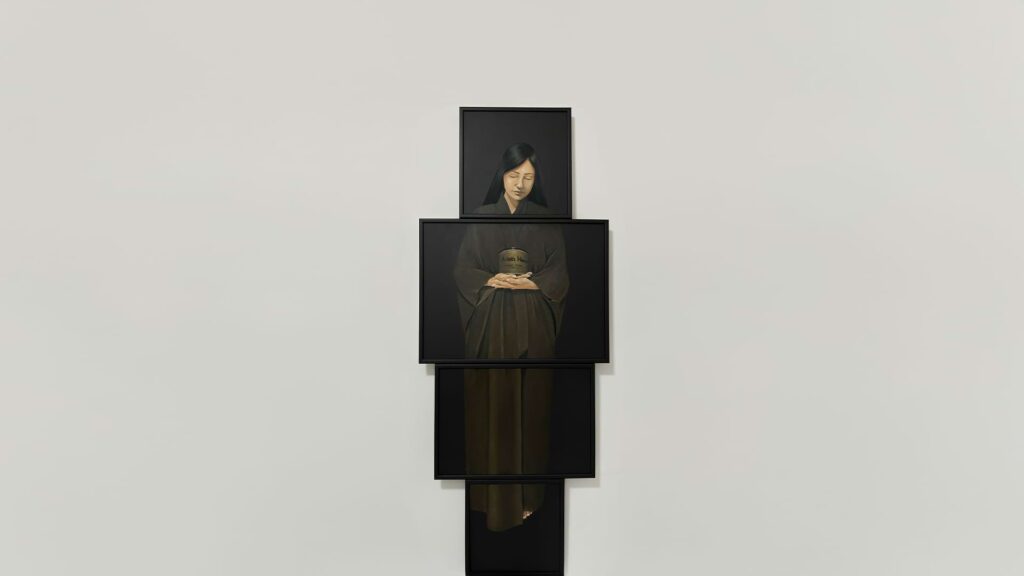
Your latest exhibition called “UNNAMED”, currently at Decollage Art Space, has a spirit that takes the viewer into an exact Ülkü Yılmaz world. In this exhibition; In addition to the heart and skull symbols that have become integrated with you for a long time, there is another image of an iconic work that you have appropriated from art history for the first time. Could you please tell us about the story how you got inspiration to create this piece?
While responding the previous question, I had said that maybe with a completely different symbol, I will express myself in my art in the future. In fact, another symbol has already been included in my story in my current solo exhibition. A depiction I have appropriated from Piero Manzoni’s ‘Artist’s Shit’ dominates three of my recent works in the exhibition. I feel this work so much with an inspiration that will determine my art journey for a while. Until this exhibition, while the heart symbol was depicted in its anatomical form in my paintings, with this exhibition, I put this in Piero Manzoni’s ‘Artist’s Shit’ can with the title of “Artist’s Heart”. I have placed it in an important place in my own story in the way that the artist’s heart has been protected along with its many emotions such as broken, wounded, sensitive, emotional … etc. Manzoni produced “Artist’s Shit” at the end of his career in 1961, two years before he passed away. This series, comprised of ninety conserve cans with titles in three different languages, was an act of defiance, with extremely provocative questions, especially towards both what is shown and what is perceived. Manzoni priced these according to the gold market by selling his own waste for its weight in gold. There are still some debate as whether the cans actually contain Manzoni’s shit, with claims that the cans were filled with plaster, but today, the real content is almost beside the point. In fact, Manzoni had produced a work that had references to a new genre of art in the new art world where the artist’s name is more important and the artist’s direct involvement or talent are not essential. With this approach, according to Manzoni, the global market could support even the lowest objects. By hiding the “artist’s heart” inside Manzoni’s can without showing its anatomical form, I have placed such a provocative work into my own story with an effective, emotional, unforgettable and at the same time romantic approach. Non of these emotions I mentioned have a place in Manzoni’s work for sure. The provocative approach of the place where inspiration comes from cannot be discussed, at the same time, Why not Piero Manzoni’s « Artist’s Shit » cans be the place where my most sensitive feelings will be kept and protected for centuries? I think I couldn’t find a more radical and safe place in the art history for this. If I hadn’t thought of this idea and seen it featured in another artist’s story with a similar approach, probably, I would be very jealous. Because, for many of the reasons I have listed above, in my own story, I put Manzoni’s work in a place far beyond the intention to be produced and the ongoing discussions about the work. I believe that, one day, this work, in which I preserved many emotions of a heart in Manzoni’s conserve can, will find a permanent place among the works that are appropriation arts in the art history.
We see lots of you in the exhibition. What does an artist, using her own figure, want to tell the viewer? At this point, what do you tell the viewer about you by depicting self portraits?
Caravaggio, Albrecht Dürer, Caterina van Hemessen, the first female artist to depict her own self-portrait in art history, Rembrandt, Gustave Courbet, Lucian Freud, Louise Bourgeois, Cindy Sherman were the artists who used self-portraits in their works so many times. For an artist who depicts herself, a self-portrait can be an insight into how she feels about herself and who she is at some point of time in her life or a visual document of her life, her environment, or even her state of mind. Self-portraits can also be a way for artists to develop and practice technical skills, such as capturing likenesses, working with light and shadow, and experimenting with different techniques. Or it could be a journey of discovering their own identity both physically and psychologically through their portraits. With many more reasons, this list goes on in this way…
I started creating self-portraits during my university education for the first time as homework for the drawing class. Afterwards, this approach helped me discover that I was the most accessible model so that I can practice drawing anytime, anywhere. And in time, I started to include my emotions in my drawing practices by forgetting all technical impulses such as the drawing should be perfect… when I realized that no other model other than myself could physically support the emotional states I wanted to convey in my paintings for my highly subjective works, I never looked for another model for my own emotions. Now, the self-portraits you see in my works probably only resemble me because I no longer look at a mirror or a photograph to catch a resemblance since they look 10 years younger than me in a way. They are all just from my imagination from years ago which I have memorized every angle and continue to depict in the same technical way.
Now, although the resemblance of my self-portraits to me seems to have stopped somewhere in time 10-15 years ago, the emotional impact of my works has a power that it has never had before… My self-portraits are the mirrors of my hidden self which is real than anything you see in my appearance. They have an approach in which I directly confront my soul rather than a perfect depiction of my face. Therefore, instead of the perception of aesthetic clarity, each of them can be considered as a testimony about what my psychology, soul, emotional state and existence are, who I am and how I present myself.
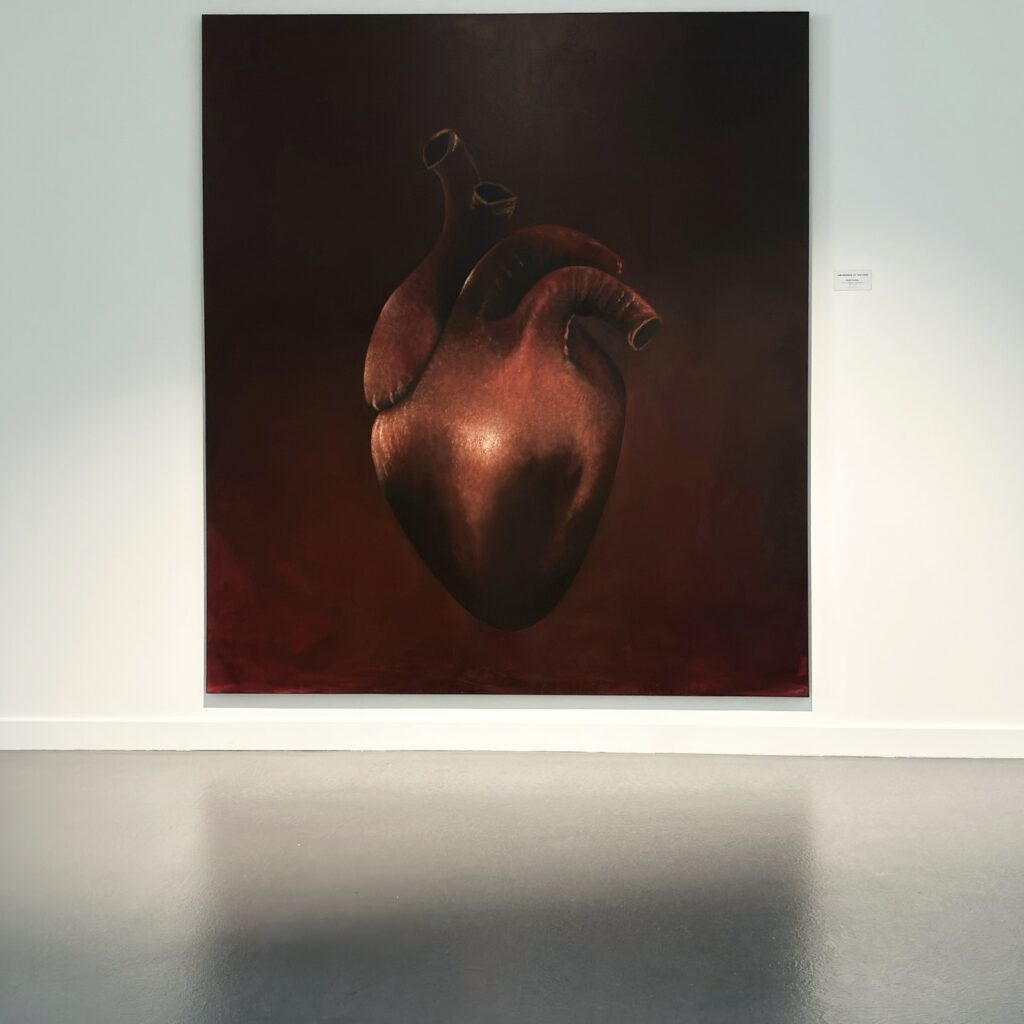
Finally, can you please talk about your future projects, how your current works will evolve and what awaits us in the future? You have had many exhibitions abroad and in Istanbul such as Miami, Tokyo, Paris and London. Do you have any international projects coming up?
My work is in constant evolution and in fact, I wouldn’t be able to be productive like this without this approach. For 10 years, I have been telling the same story in many different ways, compositions, techniques and materials by interpreting it in a search for how I can talk about my soul more in my art… What I have done recently has always been a precursor to the works I will produce in the near future, therefore the compositions of my next Paris solo exhibition are ready to be created on the canvas in my drawing notebook. And parallel to this, I would love to create a series which I will get even more lost in the art history. This time, There is something that I ve been thinking of creating for years and years but never had the courage to do it. For my art, I want to find a place in the world of Caravaggio, an artist I started traveling only to see his works all over the world. For me, he was the most glorious artist at expressing himself despite the time and church in the era where he lived. He never wanted to be anyone’s like and he truly achieved it. Probably , the most challenging works I will ever have will come with this story, and I am extremely excited for this new chapter of my art. And at the same time, I have been an official member of an artist union in France for a year, and from now on, I ll be living abroad more with my solo and group exhibitions.


